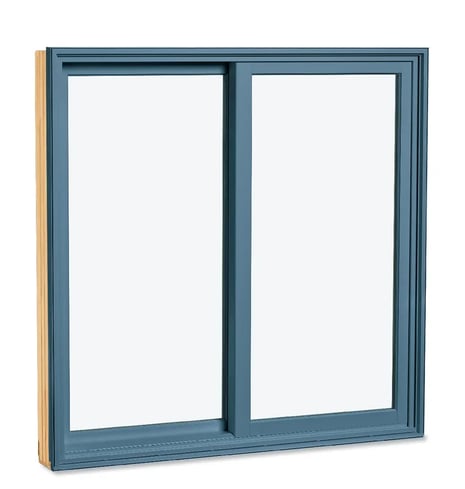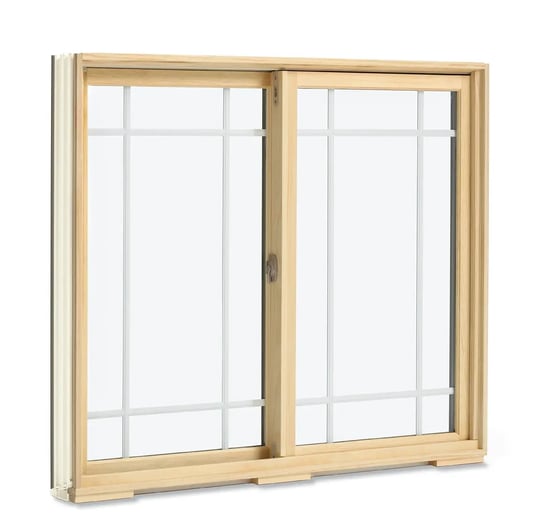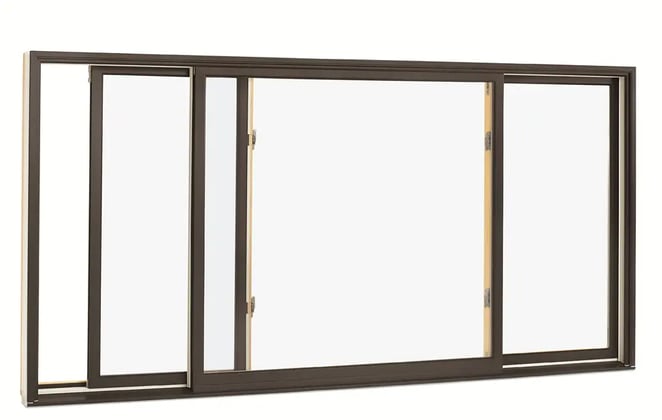Ever wondered what makes sliding windows so popular in contemporary homes?
Curious about the different types and where they work best?
You're in the right place! In this article, we'll give you the skinny on sliding windows: their unique features and benefits. We'll cover everything from single and double sliders to tri-sash windows, plus ideal placements in the home, pros and cons, and more.

What Are Sliding Windows?

Sliding windows, also known as gliding windows, are a popular window style consisting of one or more movable panels, or sashes, that slide horizontally along a track. Unlike casement windows, which swing inward or outward, sliding windows move side to side, making them an excellent choice if you ant to avoid blocking space.
Types of Sliding Windows
Sliding windows fall into three main types: single slider, double slider, and three-panel or tri-sash sliders.
Single Slider Windows

Single slider windows feature a design where one pane is fixed in place while the other pane slides horizontally. This simple mechanism makes them easy to operate and maintain.
- Applications: Single slider windows are commonly used in rooms where you need light and a view but want a straightforward window that’s easy to use, such as bedrooms, living rooms, and kitchens.
- Benefits: They are more affordable than other types of sliding windows due to their simplicity.
Double Slider Windows

Double slider windows allow both panes to slide horizontally, allowing for more control over airflow. They are, however, more expensive than single sliders.
Three-Panel or Tri-Sash Slider Windows

Three-panel slider windows, also known as triple slider windows or tri-sash gliders, have a fixed center pane with sliding panes on either side. This configuration is perfect for larger window openings.
Best for Large Openings and Panoramic Views:
- Applications: These windows are ideal for large living areas, panoramic views, and places where you want to maximize natural light and visibility, such as living rooms facing a garden or scenic view.
- Benefits: The fixed center pane provides a wide, unobstructed view, while the sliding side panes allow for versatile ventilation options.
Where to Place Sliding Windows
Living Rooms and Bedrooms
Sliding windows are an excellent choice for living rooms and bedrooms where you want to maximize natural light and views. The large glass panes offer an unobstructed view of the outdoors, making your space feel more open and connected to nature. They also provide excellent ventilation, allowing fresh air to flow through your home with ease.
Kitchens
In the kitchen, sliding windows are practical and functional. They can be installed above countertops or sinks, providing easy access to fresh air without the need to reach over appliances or fixtures. Their horizontal sliding mechanism ensures they don’t take up valuable counter space, making them ideal for busy kitchen areas.
Bathrooms
Sliding windows are a smart choice for bathrooms where privacy and ventilation are crucial. They allow for effective air circulation, helping to reduce moisture and prevent mold growth. Frosted or textured glass options can be used to maintain privacy while still letting in natural light.
Basements
Basement windows can benefit greatly from the horizontal design of sliding windows. These windows fit well in smaller openings and provide essential light and ventilation in otherwise dark and enclosed spaces. Their ease of use makes them a practical option for basements.
Home Offices
In a home office, sliding windows can create a productive and comfortable environment. They bring in natural light, which can enhance your mood and productivity. Additionally, the ability to easily open the window for fresh air can make your workspace more pleasant.
Patios and Balconies
Sliding windows are perfect for areas that connect to patios or balconies. They provide a seamless transition between indoor and outdoor spaces, making it easy to enjoy fresh air and scenic views. Their space-saving design ensures that they don’t interfere with traffic flow in and out of your home.
Hallways and Staircases
For hallways and staircases, sliding windows can add light and openness to areas that might otherwise feel cramped and dark. They can be installed at various heights to ensure privacy while still providing the benefits of natural light and ventilation.
Pros of Sliding Windows
- Simple Operation: Sliding windows are designed to open and close with minimal effort. The horizontal sliding mechanism makes them particularly user-friendly for people of all ages.
- Convenience: The ease of operation makes these windows ideal for hard-to-reach places, such as above kitchen sinks or in bathrooms.
- Space-Saving Design: Since sliding windows do not protrude outward or inward, they are perfect for areas where space is at a premium, such as walkways, patios, or rooms with limited space.
- Expansive Glass Panes: Sliding windows typically feature large panes of glass, offering unobstructed views of the outdoors and allowing ample natural light to flood into your home.
- Aesthetic Appeal: The large glass area enhances the aesthetic appeal of your home by creating a seamless connection with the outdoors.
Cons of Sliding Windows
- Track Maintenance: The tracks on which the windows slide can accumulate dirt and debris over time, which can cause the windows to stick or jam if not regularly cleaned and maintained.
- Wear and Tear: The seals around sliding windows may wear out faster than those on other window types due to the frequent sliding motion, potentially leading to drafts and reduced energy efficiency over time.
- Aesthetic Fit: While sliding windows offer a modern look, they may not be suitable for homes with traditional or historic architectural styles. Some homeowners may prefer the look of other window types that better match their home’s aesthetic.
Sliding Window Materials and Styles
Frame Materials
- Vinyl: Vinyl frames are popular due to their cost-effectiveness and low maintenance. They offer good insulation and are resistant to moisture.
- Aluminum: Aluminum frames provide a sleek, modern appearance and are known for their strength and durability. They are lightweight and can support larger panes of glass, making them ideal for contemporary designs.
- Wood: Wood frames offer a timeless, classic look that can be customized with different finishes and stains. They provide excellent insulation but require more maintenance to protect against moisture and pests.
- Fiberglass: Fiberglass frames are extremely durable and offer superior energy efficiency. They can withstand extreme weather conditions and are low-maintenance, making them a long-lasting option.
Design Styles
Traditional
- Traditional sliding window designs often feature classic details and finishes that complement historical or more conventional home styles. They can include decorative grilles and wood finishes.
Modern
- Modern sliding windows focus on clean lines and minimalist aesthetics. They often use materials like aluminum or fiberglass and maximize glass area for unobstructed views and natural light.
Custom Designs to Match Home Aesthetics
- Custom sliding windows can be tailored to fit the specific style and architectural details of your home. Whether you want a unique color, special hardware, or a combination of materials, custom designs ensure that your windows perfectly match your home's aesthetic.
Interested in Other Window Types?
Still feeling undecided or curious about how casement windows compare to other types? Visit our comprehensive guide to window typesto explore more options and find the perfect windows for your style. Whether you're renovating or building new, understanding all your options is the key to making informed decisions that you'll be happy with for years to come.

